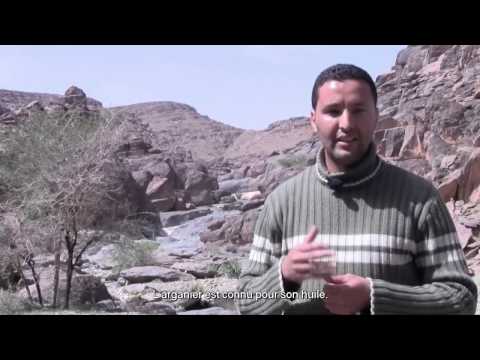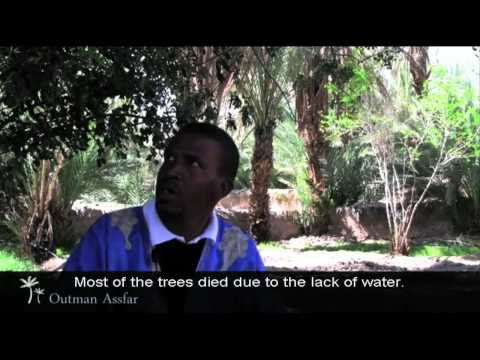Photo:
Like much of the Maghreb, Morocco faces current water scarcity, which is likely to intensify with climate change. Climate change projections include:
- Increased temperatures and evapotranspiration
- Declining and increasingly erratic rainfall
- Reduced agricultural yields
- Lower mountain snowfall and consequently increased streamflow variability
- Changes to the canary current upwelling large marine ecosystem, and potential threats to fisheries
- Coastal erosion
- Decreasing resilience of forest resources, leading to habitat fragmentation and threats to endemic biodiversity
Community-Based Adaptation (CBA) activities in Morocco will focus on adaptation both in natural resource-dependent communities, focusing on water, agriculture, forestry and coastal zones. Activities will be guided by the CBA Country Programme Strategy (English) (French)
All CBA projects involve non-governmental organizations (NGO) at the local and national levels. In addition, the UN Volunteers is a project partner in seven (7) out of the ten (10) CBA countries: Bolivia, Guatemala, Jamaica, Morocco, Niger, Namibia, and Samoa. In addition to the Adaptation & Volunteerism Specialist overseeing the seven (7) countries, an International UNV officer in Morocco is fully dedicated to the CBA projects at the local level. The partnership began in June 2009.
The CBA Morocco portfolio consists of seven (7) projects total. They are:
1. Land and Water Protection, Conservation Farming and Climate Risk Management in El Mouddaa
2. Natural Resource and Endemic Species Conservation in Laachoria Community
3. Vetiver Grass and Conservation Farming in Sidi Majbeur
4. Agroforestry and Soil/Water Conservation in the Boumaad Community
5. Resiliency through Sustainable Farming/Forestry Strategies in the Azilal Province
6. Strengthening Tarmguiste Ecosystem Resilience and Local Adaptive Capacities
7. Enhancing the Resilience of the Iguiwas Oasis Ecosystem to the Impacts of Climate Change
* Morocco is one of ten (10) countries implementing projects as part of UNDP's Community-Based Adaptation programme. *
- Community
- United Nations Development Programme (UNDP)
- Global Environment Facility (GEF)
- The GEF Small Grants Programme
- UN Volunteers
Morocco is situated in the extreme north-west of Africa, bordered to the east and to the south-east by Algeria, to the south by Mauritania, to the west by the Atlantic Ocean and to the north by the Mediterranean Sea. Climate change poses serious risks the country's natural and artificial environments. Climate scenarios and reports have indicated a high probability that temperatures may rise across the country. According to annual estimates of temperature, they could increase from 0.6 °C to 1.1 °C between 2000 and 2020. The scenarios have also indicated that sea levels could rise 2.6 to 15.6 cm compared to the average level in 1990. The most recent climate model results (2006) have also shown that there could very well be a reduction in rainfall of around 4%.
Other predictions, according to IPPC methodology, indicate that there could be a high probability of extreme meteorological phenomena occurring, such as:
- The increased frequency and intensity of frontal and convective thunderstorms in the north and to the west of the Atlas Mountains
- The disruption of the Canary Islands current and its impacts on marine ecosystems
- The increased frequency and intensity of droughts in the south and east of the country
- The disruption of seasonal rainfall (winter rains concentrated in a short period)
- The reduction in the duration of snowfall and less snow cover (altitude migration of the isotherm 0 °C and accelerated melting of snow).
These phenomena could have many negative impacts on Morocco, notably:
- The flooding of coastal lands
- The salinization of estuaries, coastal aquifers and coastal lands
- The increased frequency of droughts and the decline in groundwater levels
- The increase in erosion rates and the siltation of dams
- The loss of biodiversity (fauna and flora) and of their habitats in the different coastal ecosystems and particularly in coastal Sites of Biological and Ecological Interest (SBEIs).
These ecological disturbances could have adverse effects, including:
- A decrease in earnings from coastline-related activities (agriculture, forest, fishing, aquaculture, industry)
- Reduced capacity of dams
- A decrease in water resources for consumption or other economic activities (tourism and industry), as well as a deterioration in the quality of water.
The Community Adaptation Programme (CBA) seeks to address a number of these challenges at the local level through capacity building activities and improved natural resource management. This is accomplished through the funding and implementation of community demonstration projects that also generate benefits for the global environment (Global Environmental Benefits, GEBs) and increase ecosystem resilience to climate change.
The main GEF focal areas that are targeted in Morocco in order to benefit the global environment are the preservation of biodiversity and the prevention of land degradation.
The CBA programme works in close collaboration with national policies currently being implemented within the field of adaptation and will use the data and guidelines of the second national communication to articulate and clarify the priorities and the options.
This collaboration facilitates the integration of lessons learned from community policies into national planning and policy and adaptation strategies.
Areas that receive assistance from the project are:
- Coastal areas (focus on the Mediterranean and particularly wet SBEIs)
- Forest areas (focus on the national parks and the SBEIs of the Middle Atlas Mountains).
- The arid and semi arid areas (particularly the Oasis).
The sectors that receive assistance from the project are:
- Agriculture
- Water (in conjunction with issues in agriculture)
- Forestry
The CBA is implemented in Morocco under the supervision of UNDP using the mechanism of the Small Grants Program the Global Environment Facility (GEF SGP).
The objective of the community-based adaptation programme (CBA) in Morocco is to incorporate the risks of climate change into the sustainable community management of natural resources.
The achievement of this objective will measured by three impact indicators. These include:
- The number of community measures identified and implemented to respond to the new risks posed by climate change.
- The number of hectares in which risk management activities related to climate change are implemented.
- The number of local and national policies adapted and developed from the lessons learned from projects carried out within the framework of the “CBA”.
Monitoring and evaluation for community-based adaptation is a new field, and the CBA project is piloting innovative approaches to evaluating the success of locally-driven adaptation projects, and generating lessons to inform ongoing practice.
Key considerations in M&E for CBA include:
- Grounding M&E in the local context: M&E for CBA should avoid overly rigid frameworks, recognizing community heterogeneity and maintaining local relevance
- Capturing global lessons from local projects: CBA projects are highly contextualized, but lessons generated should be relevant to stakeholders globally
- Incorporation of both quantitative and qualitative indicators: to ground projects in tangible changes that can be objectively evaluated, and to capture lessons and case studies for global dissemination
To these ends, the CBA project uses three indicator systems: the Vulnerability Reduction Assessment, the Small Grants Programme Impact Assessment System, and the UNDP Climate Change Adaptation Indicator Framework.
The Vulnerability Reduction Assessment (VRA)
The VRA is a question-based approach with the following aims:
- To make M&E responsive to community priorities
- To use M&E to make projects more accountable to local priorities
- To make M&E capture community ideas and local knowledge
- To gather community-level feedback to guide ongoing project management
- To generate qualitative information
- To capture lessons on specific issues within community-based adaptation
- To generate case studies highlighting adaptation projects
The VRA follows UNDP's Adaptation Policy Framework, and is measured in a series of meetings with local community stakeholders. In these meetings, locally-tailored questions based on standard VRA questions/indicators are posed, and the community assigns a numerical score on a 1-10 scale for each question. Progress is evaluated through changes in scores over the course of implementation, as well as through qualitative data collected in community discussions surrounding the exercise.
UNDP has developed a Users Guide to the VRA (Espanol) (Francais) as a tool to assist practitioners to conceptualize and execute VRA measurements in the context of CBA projects.
The SGP Impact Assessment System (IAS)
The CBA, being a project of the GEF Strategic Priority on Adaptation, aims to increase the resilience of ecosystems and communities to the impacts of climate change, generating global environmental benefits, and increasing their resilience in the face of climate change impacts. To this end, the CBA projects use the SGP's impact assessment system for monitoring achievements in GEF focal areas (focusing primarily on biodiversity and sustainable land management).
The IAS is composed of a number of quantitative indicators which track biophysical ecosystem indicators, as well as policy impact, capacity development and awareness-building.
UNDP Climate Change Adaptation Indicator Framework
CBA projects also track quantitative indicators from UNDP's adaptation indicator framework, corresponding to the thematic area on natural resources management. More information on UNDP's indicator framework can be found on the UNDP climate change adaptation monitoring and evaluation website.
* This description applies to all projects implemented through UNDP's Community-Based Adaptation programme. Specific details on this project's M&E will be included here as they become available. *
- UNDPCBA Project Management Unit
- GEF Small Grants ProgrammeMs. Ghita HamzaoulNational Coordinator (Morocco)
- UN VolunteersMs. Anne-France WittmannInternational UN Volunteer Officer



